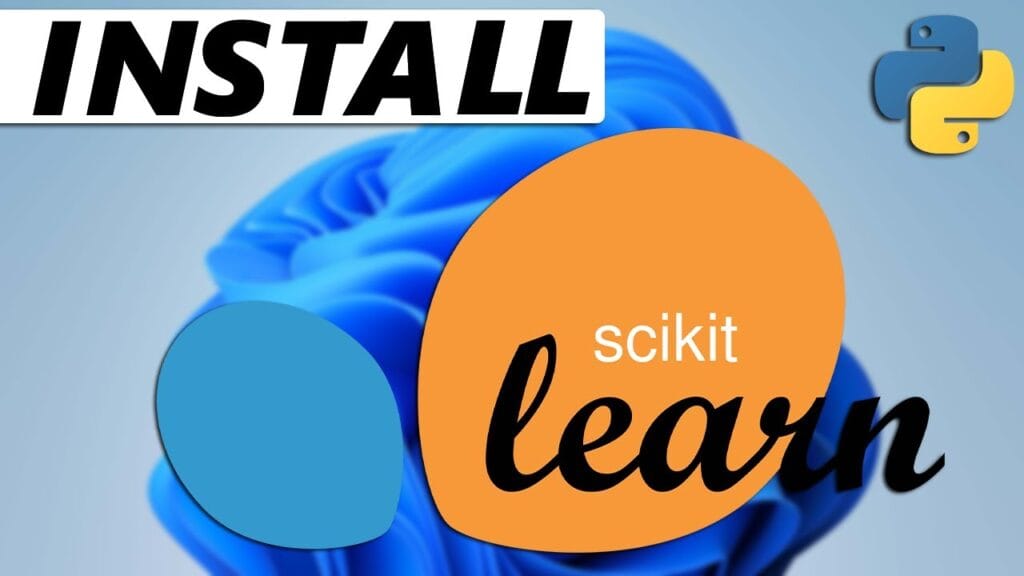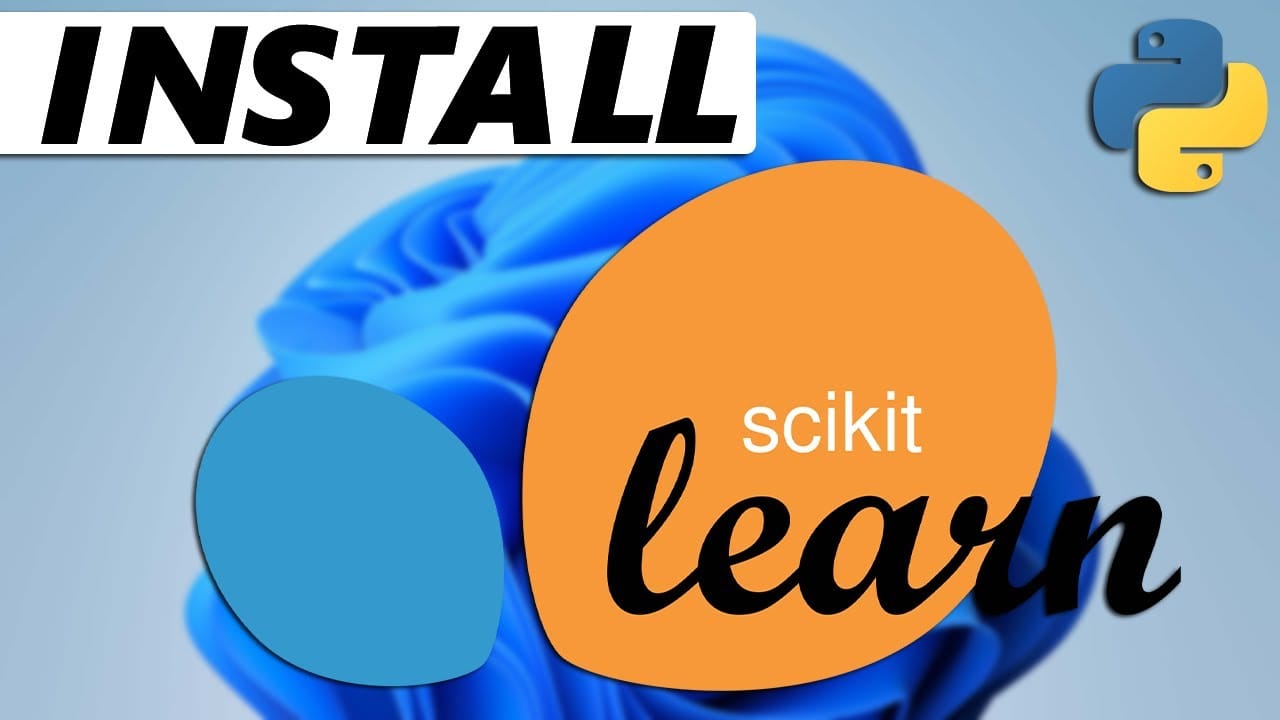In the world of machine learning, Scikit-learn has emerged as one of the most powerful and versatile Python libraries. Whether you’re a seasoned data scientist or a beginner exploring the realm of predictive modeling, mastering the installation and setup of Scikit-learn is a crucial step in your journey. In this comprehensive guide, we’ll walk you through the process of installing Scikit-learn on your Windows computer, ensuring you have the necessary tools to start building and evaluating your machine learning models.
Why Scikit-learn?
Scikit-learn, often referred to as “sklearn,” is a robust and user-friendly machine learning library that provides a wide range of tools for classification, regression, clustering, and more. Developed by a team of renowned researchers and engineers, Scikit-learn has become a go-to choice for data scientists and machine learning enthusiasts alike, thanks to its simplicity, efficiency, and extensive documentation.
One of the key advantages of Scikit-learn is its ability to seamlessly integrate with other popular Python libraries, such as NumPy, SciPy, and Matplotlib. This integration allows you to create comprehensive data processing and visualization pipelines, making it easier to explore, analyze, and present your machine learning results.
Prerequisites: Ensuring a Smooth Installation
Before we dive into the installation process, it’s important to ensure that you have the necessary prerequisites in place. The first and most crucial step is to make sure you have the latest version of Python installed on your Windows computer. If you haven’t already done so, you can follow the steps outlined in the How To Install Python 3.13.3 On Windows 11 (2025 Version) video to get the latest version of Python up and running.
Once you have Python installed, it’s time to verify the version you’re running. You can do this by opening the Command Prompt (cmd) on your Windows computer and typing the following command:
python --versionThe output should display the version of Python you have installed, which should be Python 3.13.3 or a later version.

Installing Scikit-learn Using Pip
Now that you have Python set up, the next step is to install Scikit-learn. The most straightforward method is to use pip, the standard package manager for Python. Pip allows you to download, install, and manage various Python libraries and packages, including Scikit-learn.
To install Scikit-learn using pip, follow these steps:
- Open the Command Prompt (cmd) on your Windows computer.
- In the command prompt, type the following command and press Enter:
pip install sklearnThis command will initiate the installation of the Scikit-learn library. Depending on your internet connection speed, the installation process may take a few minutes to complete.
Once the installation is finished, you should see a message indicating that Scikit-learn has been successfully installed.
Verifying the Installation
To verify that Scikit-learn has been installed correctly, you can follow these steps:
- Launch the Integrated Development and Learning Environment (IDLE) on your Windows computer. IDLE is a Python-specific IDE that allows you to write and run your Python programs.
- In the IDLE window, type the following command and press Enter:
import sklearnIf the command runs without any error messages, it means that Scikit-learn has been installed successfully. If you encounter an error, it’s likely that the installation process was not completed correctly, and you may need to try the installation again.
Updating Scikit-learn
As with any software, it’s important to keep Scikit-learn up-to-date to ensure you have access to the latest features, bug fixes, and performance improvements. Fortunately, updating Scikit-learn is a straightforward process using pip.
To update Scikit-learn, follow these steps:
- Open the Command Prompt (cmd) on your Windows computer.
- In the command prompt, type the following command and press Enter:
pip install --upgrade sklearnThis command will update Scikit-learn to the latest available version. Once the update is complete, you can verify the new version by launching IDLE and running the following command:
import sklearn
print(sklearn.__version__)The output should display the updated version of Scikit-learn installed on your system.
Integrating Scikit-learn with Other Libraries
One of the strengths of Scikit-learn is its ability to seamlessly integrate with other popular Python libraries, such as NumPy, SciPy, and Matplotlib. This integration allows you to create comprehensive data processing and visualization pipelines, making it easier to explore, analyze, and present your machine learning results.
For example, you can use NumPy to handle numerical data, SciPy for scientific computing tasks, and Matplotlib for data visualization. By combining these libraries with Scikit-learn, you can create powerful machine learning workflows that encompass data preprocessing, model training, and result presentation.
To install these additional libraries, you can use the same pip command you used for Scikit-learn. For instance, to install NumPy, you would run the following command in the Command Prompt:
pip install numpySimilarly, you can install SciPy and Matplotlib using the following commands:
pip install scipy
pip install matplotlibOnce you have these libraries installed, you can start integrating them with your Scikit-learn projects, creating a comprehensive data science workflow that leverages the strengths of each library.
Scikit-learn Resources and Community
Scikit-learn has a thriving community of users and contributors, providing a wealth of resources to help you get started and stay up-to-date with the latest developments. Here are some of the key resources you can explore:
- Official Documentation: The Scikit-learn official documentation is an invaluable resource, offering detailed tutorials, user guides, and API references to help you navigate the library’s features and capabilities.
- Community Forums: The r/MachineLearning subreddit and the Scikit-learn tag on Stack Overflow are active community forums where you can ask questions, share your projects, and learn from the experiences of other Scikit-learn users.
- Online Courses and Tutorials: Platforms like Coursera, Udemy, and YouTube offer a wide range of online courses and tutorials to help you master Scikit-learn and machine learning concepts.
- GitHub Repository: The Scikit-learn GitHub repository is the central hub for the library’s development, where you can find the latest code, report issues, and contribute to the project.
By leveraging these resources, you can deepen your understanding of Scikit-learn, stay informed about the latest updates and best practices, and connect with a vibrant community of machine learning enthusiasts and professionals.
Conclusion
In this comprehensive guide, we’ve walked you through the process of installing Scikit-learn on your Windows computer. From ensuring you have the necessary prerequisites to verifying the installation and updating the library, you now have the knowledge and tools to get started with Scikit-learn and begin building your own machine learning models.
Remember, Scikit-learn is just one piece of the puzzle when it comes to data science and machine learning. By integrating it with other powerful Python libraries like NumPy, SciPy, and Matplotlib, you can create a robust and versatile data processing and analysis workflow. Explore the resources mentioned in this article, and dive deeper into the world of Scikit-learn and machine learning. Happy coding!






I like the efforts you have put in this, regards for all the great content.
This is really interesting, You’re a very skilled blogger. I’ve joined your feed and look forward to seeking more of your magnificent post. Also, I’ve shared your site in my social networks!
I truly appreciate your technique of writing a blog. I added it to my bookmark site list and will
I very delighted to find this internet site on bing, just what I was searching for as well saved to fav
There is definately a lot to find out about this subject. I like all the points you made
There is definately a lot to find out about this subject. I like all the points you made
Very well presented. Every quote was awesome and thanks for sharing the content. Keep sharing and keep motivating others.
I very delighted to find this internet site on bing, just what I was searching for as well saved to fav
I just like the helpful information you provide in your articles
Hi there to all, for the reason that I am genuinely keen of reading this website’s post to be updated on a regular basis. It carries pleasant stuff.
Pretty! This has been a really wonderful post. Many thanks for providing these details.
Pretty! This has been a really wonderful post. Many thanks for providing these details.
I do not even understand how I ended up here, but I assumed this publish used to be great
Pretty! This has been a really wonderful post. Many thanks for providing these details.
Good post! We will be linking to this particularly great post on our site. Keep up the great writing
Great information shared.. really enjoyed reading this post thank you author for sharing this post .. appreciated
Good post! We will be linking to this particularly great post on our site. Keep up the great writing
I do not even understand how I ended up here, but I assumed this publish used to be great